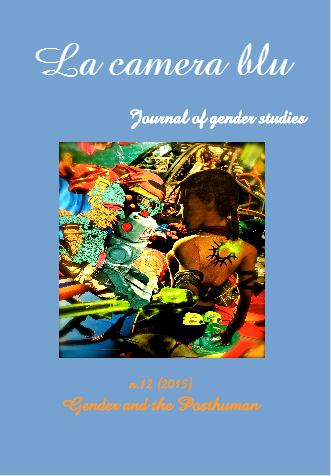Biocapital, reproductive biotechnologies, posthuman bodies
DOI:
https://doi.org/10.6092/1827-9198/3666Keywords:
Biocapital, reproductive biotechnologies, posthuman bodiesAbstract
Human reproductive medicine has grown significantly thanks to techniques used in assisted reproduction in animals, mammals such as cattle and sheep; On animals various techniques of assisted reproduction have been developed and perfected, these include: artificial insemination, gametes and embryo cryopreservation, superovulation and embryo transfer, nuclear transfer or cloning, and others. Except for cloning, all other biotechnologies mentioned are used today in the processes of human assisted reproduction. According to Melinda Cooper and Adele Clarke the purpose of these biotechnology methods was, at the beginning, to raise the added value by exploiting the reproductive labor of female animals, overcoming the limits set by nature. Most of the techniques later employed in assisted reproduction in human females had been tested on species of mammals in order to increase productivity and profitability. This paper raises the question about the differences and similarities between the mechanisms of economic valorization reserved for women, females of the human species, and for females of other mammals, considering them very important in the Posthuman era. The generative power of female cattle is put in value in the context of Fordist mass production of consumer goods. The generative power of women is instead enhanced in the new frame of the posthuman and the post-Fordist, of the production of highly personalized consumer goods: the posthuman times are characterized by the presence of two capitalist regimes just as different as compatible, as that of Fordism and post- Fordism. This paper tries to explain that the production of value passes in both cases through the capture of the generative power of the females regardless of the species. Following Rosi Braidotti, we call this generative power zoe, to emphasize its posthuman features. Today biocapital regenerates and nourishes its cash flows precisely through the biotechnologicalcapture of zoe: - thousands and thousands - of women’s, cow’s and sheep’s oocytes are picked up every day and are placed in the new global market of biotech start-up. It is only the end that makes the animal oocytes different from those of humans: in the first case since the purpose is producing more milk or more meat (according to the Fordist model of mass production), in the second case to have a child of their own beyond biological limits (post-Fordist model ofpersonalized production). The starting point remains the oocyte, both animal and human, today more and more posthuman, considering the high impact that biotechnology has on its common understanding. The oocyte is in fact becoming a totemic object, such as Dolly the sheep, that seems to have been born in the laboratory and have no past. It has become urgent to ask, as Donna Haraway did about children: where do oocytes come from? They come from thebodies of female animals and women. Animals and female bodies, however, are often forgotten and removed from the dialectic of otherness: not responding to the canons of humanity, they deserve less of it. The Posthuman approach is useful, just at the time of biocapital, in order to return to subjectivities, forgotten in the name of profit, the materiality of their lives and rights.Downloads
Download data is not yet available.
Downloads
Published
2015-10-13
How to Cite
Balzano, A. (2015). Biocapital, reproductive biotechnologies, posthuman bodies. La Camera Blu, 11(12). https://doi.org/10.6092/1827-9198/3666
Issue
Section
The Topic
License
La camera blu is an open access, online publication, with licence CCPL Creative Commons Attribution 3.0 Unported


